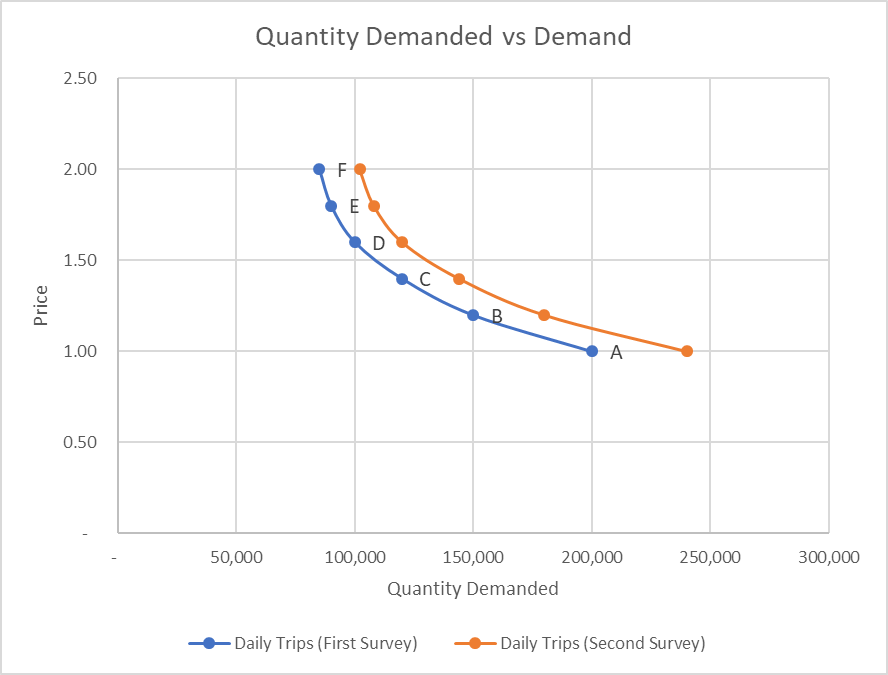Quantity Demanded vs Demand
In economics, demand refers to the demand schedule i.e. the demand curve while the quantity demanded is a point on a single demand curve which corresponds to a specific price.
It is important to distinguish between the two terms because they refer to totally different concepts. When we say that demand for a product or service has changed, we mean that the whole demand curve has shifted inwards or outwards i.e. the number of units demanded at each price has increased or decreased simultaneously. However, when we say that there is a change quantity demanded, we mean that due to change in price of the product, the number of units of the product which consumers are willing to buy at the new price has changed.
Example
Let’s illustrate this with an example. Imagine you work as a financial analyst at a company that operates a mass transit line. You want to determine the optimal fare for your system. You conducted a survey to find out how much the commuters are willing to pay for each trip on your system. As soon as you finished your first survey, you received news that a government agency has introduced new regulations which will impose 30% taxes on the ride-sharing cab services. You decided to do another survey to find out how this impacts your ridership.
The new results of the first and second survey are as follows:
| Fare per Trip (in $) | Daily Trips (First Survey) | Daily Trips (Second Survey) |
|---|---|---|
| 1.00 | 200,000 | 240,000 |
| 1.20 | 150,000 | 180,000 |
| 1.40 | 120,000 | 144,000 |
| 1.60 | 100,000 | 120,000 |
| 1.80 | 90,000 | 108,000 |
| 2.00 | 85,000 | 102,000 |
Let’s plot the results of these two surveys:

Change in Quantity Demanded
As we move from Point F to E or E to D or anywhere from one point on the curve for the first survey, we are referring to changes in quantity demanded. At point F, when the fare is $2 per trip, we expect 85,000 total trips. When we reduce fare to $1.8 per trip, we expect our ridership to increase to 90,000 and so on. This is a change in quantity demanded just in response to a change in price.
Shifts in Demand
When there is an increase or decrease in demand due to factors other than the product's own price, there is a shift in demand curve inwards or outwards. In the plot above, a movement form demand curve for the first survey to a demand curve for the survey represent an increase in demand. Change in demand results not from change in price of the product plotted but due to other determinants of demand such as prices of substitute, prices of complements, etc. In the example discussed above, the increase in demand for your mass transit system increases due to increase in the price of substitute goods (i.e. ride-sharing app due to additional taxes).
by Obaidullah Jan, ACA, CFA and last modified on